Kagawa, Japan’s smallest prefecture, happens to be one of the country’s larger bonsai producers. Fifty years ago, to hear some of the local nurserymen tell it, the area was rife with bonsai growing in the region’s sandy soil. The clusters of nurseries around Kinashi and Kokubunji, about 15 minutes by car or train from Takamatsu, together form the Kinashi Bonsai Sato (District). I suspect the local bonsai growers were a driving force behind the selection of nearby Takamatsu as home for the 2011 Asia Pacific Bonsai and Suiseki Convention and Exhibition. For two days of the convention, buses shuttled convention-goers to the area’s nurseries and growing grounds. Our pamphlet showed 71 nurseries within walking distance of two main bus stops. Yes, 71 nurseries in the same neighborhood. My first stop was Nakanishi Chinshoen.

Nakanishi Chinshoen
After walking through the beautiful entrance to the nursery, I found myself in a forest of black pines with the smallest needles I’d ever seen.
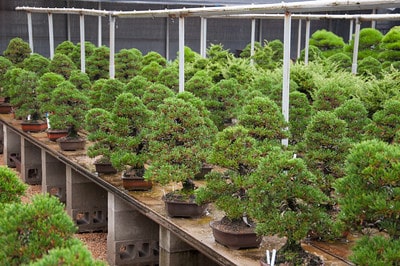
Black pines with tine needles – what could they be?
I was completely puzzled. After 15 minutes of wandering bewilderment, I asked the smiling proprietor about the small-needled trees. It turns out the previous generation of Nakanishi introduced the bonsai world to ‘Kotobuki’ black pine in the 1970s. The mother tree was discovered in Kokubunji and has been used for scions ever since (see brief story about “Kotobuki” from ASPAC). As the variety doesn’t sprout from seed, it’s typically grafted onto regular black pine bonsai. Some of the oldest grafted trees were incredible.
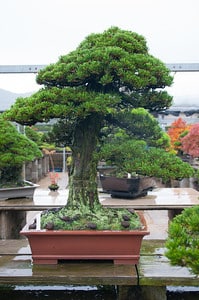
Kotobuki black pine
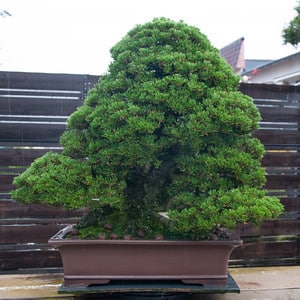
Kotobuki
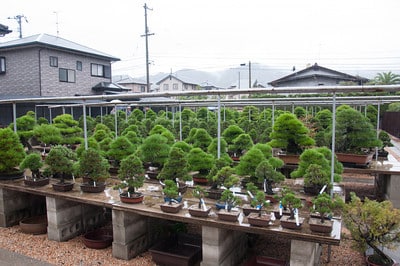
So many pines!
The growers explained that the trees grow fairly quickly but naturally stay dense. Because all branches must begin as grafts, however, development is slow, and most trees have nice branches on relatively thin trunks. The tree below is a good example of the trees in the garden.
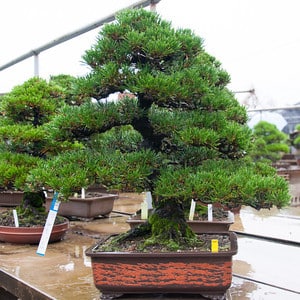
Young Kotobuki – about $1,500
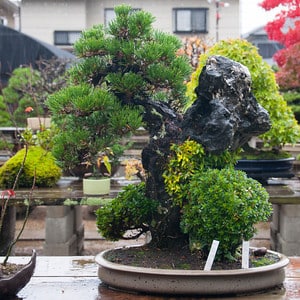
Kotobuki on a rock
Unsurprisingly, the Nakanishi’s had some serious black pines in the garden as well.
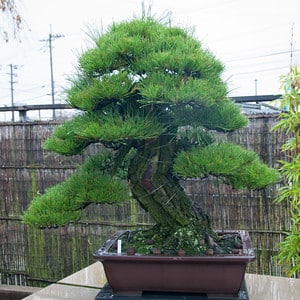
Black pine
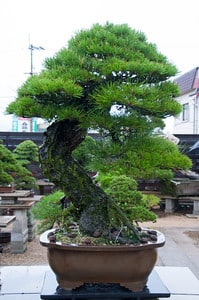
Black pine
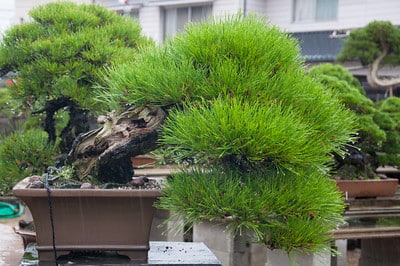
Black pine
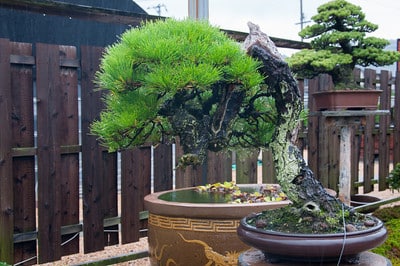
Black pine
As we peeked about in the rain, we turned a corner at one point to discover a field of white pines growing in the ground. They were good sized trees too – what fun projects they would make!
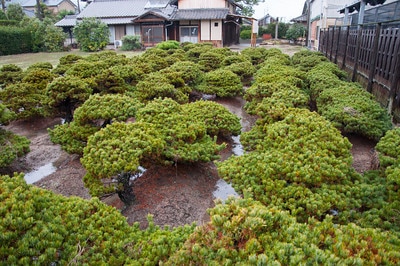
White pines growing in the ground
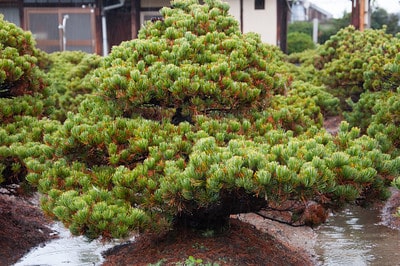
White pine
Yet another corner of the garden boasted corkbark pines and non-pines. The Kinashi Bonsai Sato tour was off to a great start.
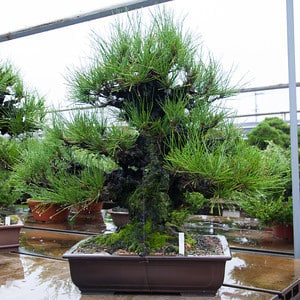
Cork bark black pine
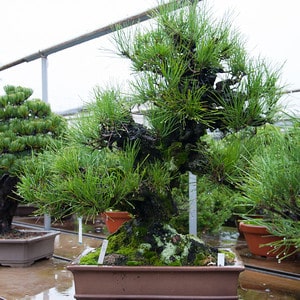
Cork bark pine
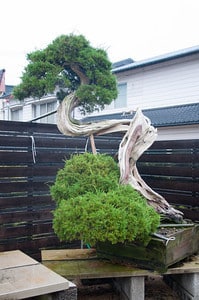
Juniper
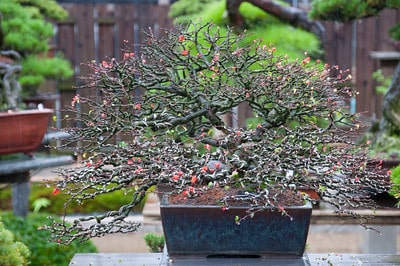
Japanese flowering quince ‘chojubai’
Subscribe to Bonsai Tonight
New Posts Delivered Every Tuesday and Friday
yenling29 says
71?!!! Geez. So do they still decandle these small needle pines? I would guess that they do not. Very cool thanks for showing all these wonderful pics!